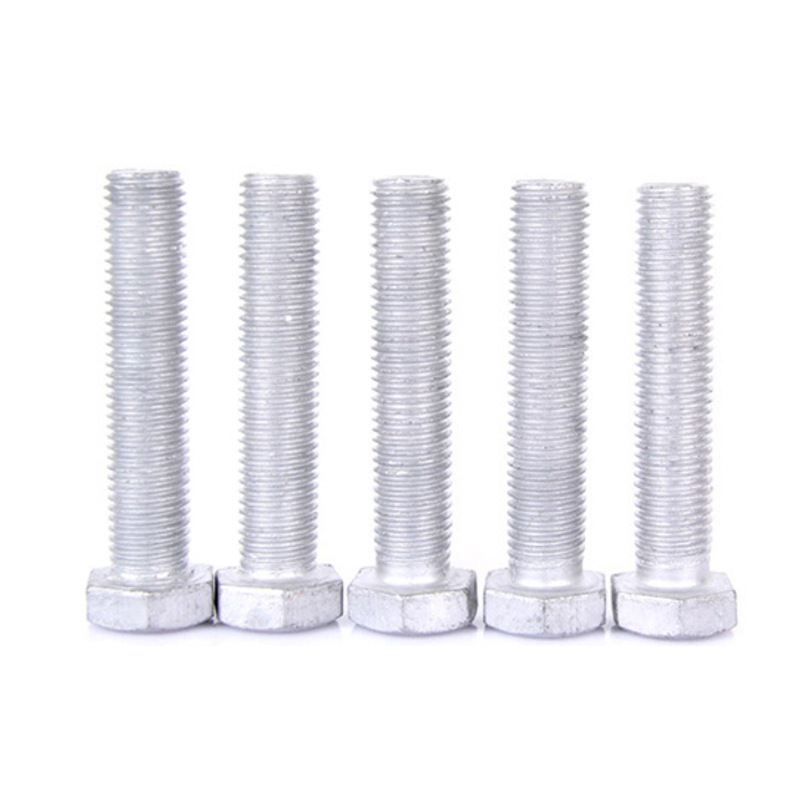

steel column anchor bolts
Dec . 26, 2024 21:38 Back to list
steel column anchor bolts
The Importance of Steel Column Anchor Bolts in Construction
In the realm of construction, the integrity of structures depends significantly on the strength and durability of their foundational elements. Among these critical components are steel column anchor bolts, which play a vital role in securing steel columns to their footings. Understanding the function, importance, and proper installation of anchor bolts is essential for engineers and construction professionals.
What Are Steel Column Anchor Bolts?
Steel column anchor bolts are heavy-duty fasteners that connect vertical steel columns to concrete foundations. They are generally embedded in the concrete during the pouring process and extend upward to provide a secure attachment point for the column. These bolts come in various sizes and grades, usually made from high-strength steel, to withstand significant loads and environmental conditions.
The Role of Anchor Bolts in Structural Stability
The primary function of anchor bolts is to provide stability to steel columns, particularly in structures subject to various forces, including dead loads, live loads, and wind loads. These fasteners help distribute the weight of the column uniformly across the foundation, ensuring that the structure can stand tall against external pressures and lateral forces.
In seismic zones, the role of anchor bolts becomes even more critical. During an earthquake, buildings experience vigorous shaking, and the last thing engineers want is for columns to detach from their bases. Strong, well-placed anchor bolts can help maintain the integrity of the structure, preventing collapse and ensuring safety for occupants.
steel column anchor bolts

Considerations for Anchor Bolt Design and Installation
Designing anchor bolts involves considering several factors, including load calculations, soil conditions, and environmental influences. Engineers must choose the appropriate bolt size, length, and grade based on these parameters. Typically, the details surrounding anchor bolt specifications, including spacing and arrangement, will be outlined in the structural plans.
The installation of anchor bolts is equally crucial. These bolts must be placed accurately and securely in the concrete. Misalignment or inadequate embedding can lead to structural failures. Therefore, construction professionals often use templates to ensure that bolts are positioned correctly before the concrete hardens. It’s also essential to embed the bolts at the correct depth and spread to prevent the risk of corrosion, which could weaken their effectiveness over time.
Conclusion The Significance of Properly Installed Anchor Bolts
Steel column anchor bolts may seem like small components in the grand scheme of construction, but their significance cannot be underestimated. They are essential for ensuring the structural integrity of buildings and other infrastructure, especially in high-load and seismic-prone areas. Proper design, selection, and installation of anchor bolts directly impact the safety and durability of structures.
In connection with modern engineering practices, it's essential for construction teams to stay updated on best practices and evolving technology concerning anchor bolts. Various materials and coatings can now enhance the lifespan and performance of anchor bolts, making them more resistant to weathering and environmental degradation.
Overall, while it’s easy to overlook these crucial components during the planning stages or installation process, steel column anchor bolts serve as the backbone of structural safety in construction. Thus, investing in high-quality anchor bolts and adhering to engineering guidelines will not only bolster the longevity of a structure but also safeguard the lives of those who use it.
Latest news
-
Hot Dip Galvanized Bolts-About LongZe|High Strength, Corrosion Resistance
NewsJul.30,2025
-
High-Strength Hot Dip Galvanized Bolts - Hebei Longze | Corrosion Resistance, Customization
NewsJul.30,2025
-
Hot Dip Galvanized Bolts-Hebei Longze|Corrosion Resistance&High Strength
NewsJul.30,2025
-
High-Strength Hot-Dip Galvanized Bolts-Hebei Longze|Corrosion Resistance&High Strength
NewsJul.30,2025
-
Hot Dip Galvanized Bolts-Hebei Longze|Corrosion Resistance&High Strength
NewsJul.30,2025
-
Hot Dip Galvanized Bolts - Hebei Longze | Corrosion Resistance, High Strength
NewsJul.30,2025

